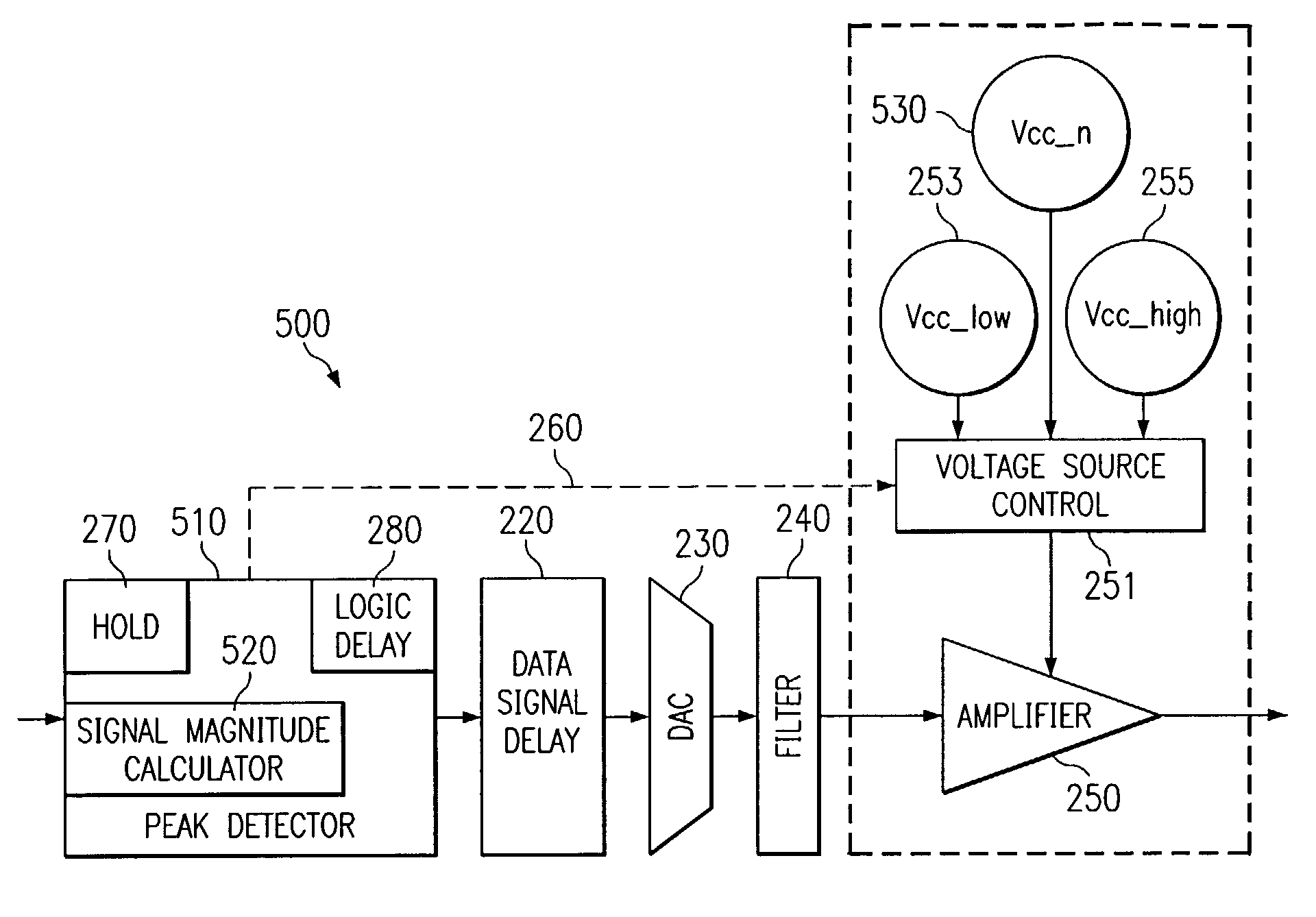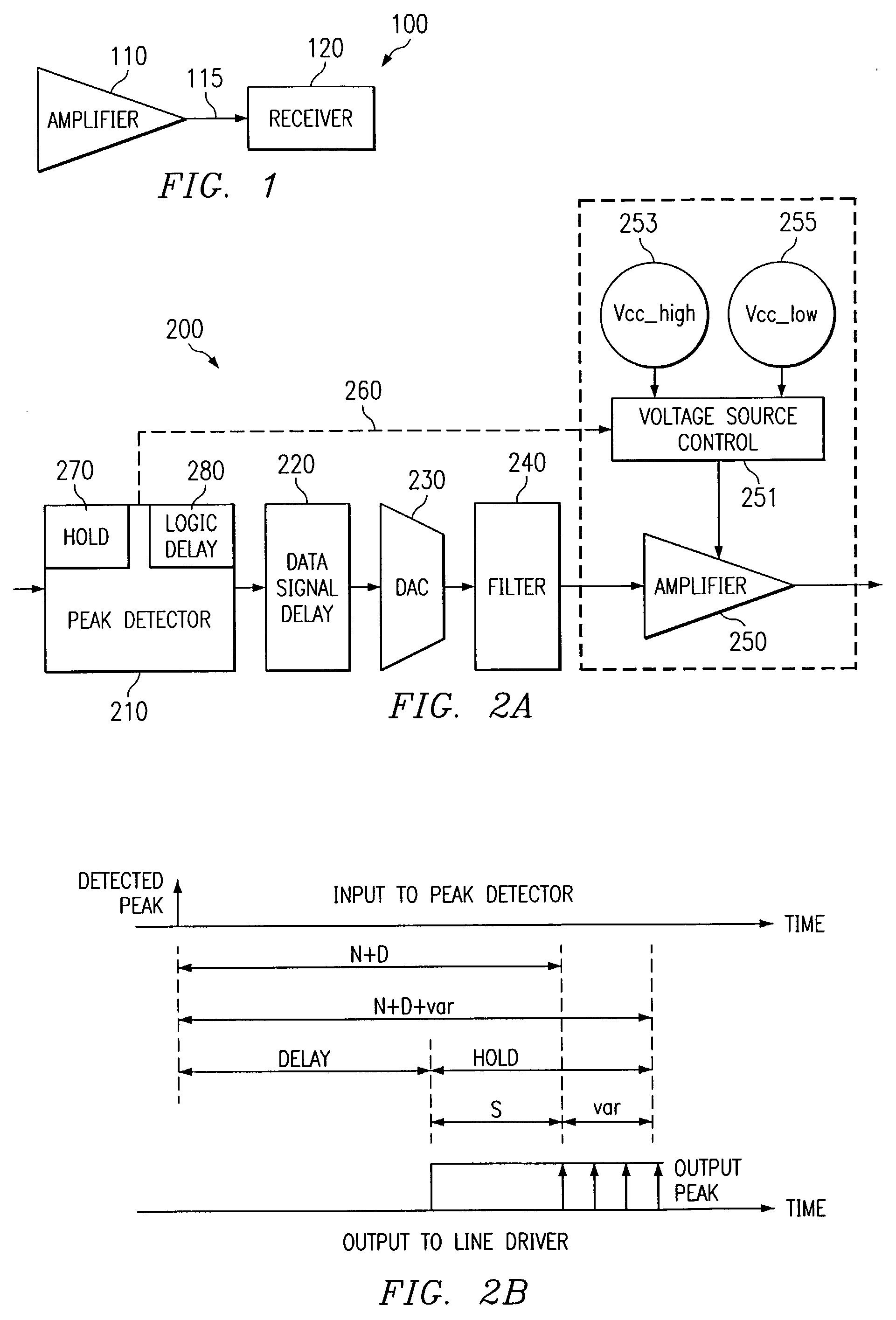Line Driver apparatus
a driver and line technology, applied in the field of electric circuits, can solve the problems of inefficiency, excessive power consumption, and the possibility of data signal clipping, and achieve the effect of preventing signal clipping, reducing disadvantages and problems, and eliminating or greatly reducing disadvantages
- Summary
- Abstract
- Description
- Claims
- Application Information
AI Technical Summary
Benefits of technology
Problems solved by technology
Method used
Image
Examples
Embodiment Construction
[0019]Details regarding one embodiment of a “zero-overhead” Class G amplifier (“zero-overhead line driver”) are provided in a related application titled “Zero-Overhead Class G Line Driver with Threshold Detection”, Ser. No. 10 / 001,330 and filed on Nov. 11, 2001, which is hereby incorporated by reference in its entirety. By “zero overhead,” it is meant that the amount of pad or tolerance that must be built into the threshold value (in order to ensure the incoming signal is not clipped and that the amplifier does not consume excess power) is minimized by setting the threshold as closely as possible to the theoretical threshold (disregarding measurement inaccuracies, filter distortion, and the like). A zero overhead Class G line driver makes the threshold determination on the incoming signal while the signal is still in the digital domain, thus improving the accuracy of the determination. Additionally, rather than switch between a first or second sub-amplifier, in one embodiment the ze...
PUM
 Login to View More
Login to View More Abstract
Description
Claims
Application Information
 Login to View More
Login to View More - R&D
- Intellectual Property
- Life Sciences
- Materials
- Tech Scout
- Unparalleled Data Quality
- Higher Quality Content
- 60% Fewer Hallucinations
Browse by: Latest US Patents, China's latest patents, Technical Efficacy Thesaurus, Application Domain, Technology Topic, Popular Technical Reports.
© 2025 PatSnap. All rights reserved.Legal|Privacy policy|Modern Slavery Act Transparency Statement|Sitemap|About US| Contact US: help@patsnap.com



